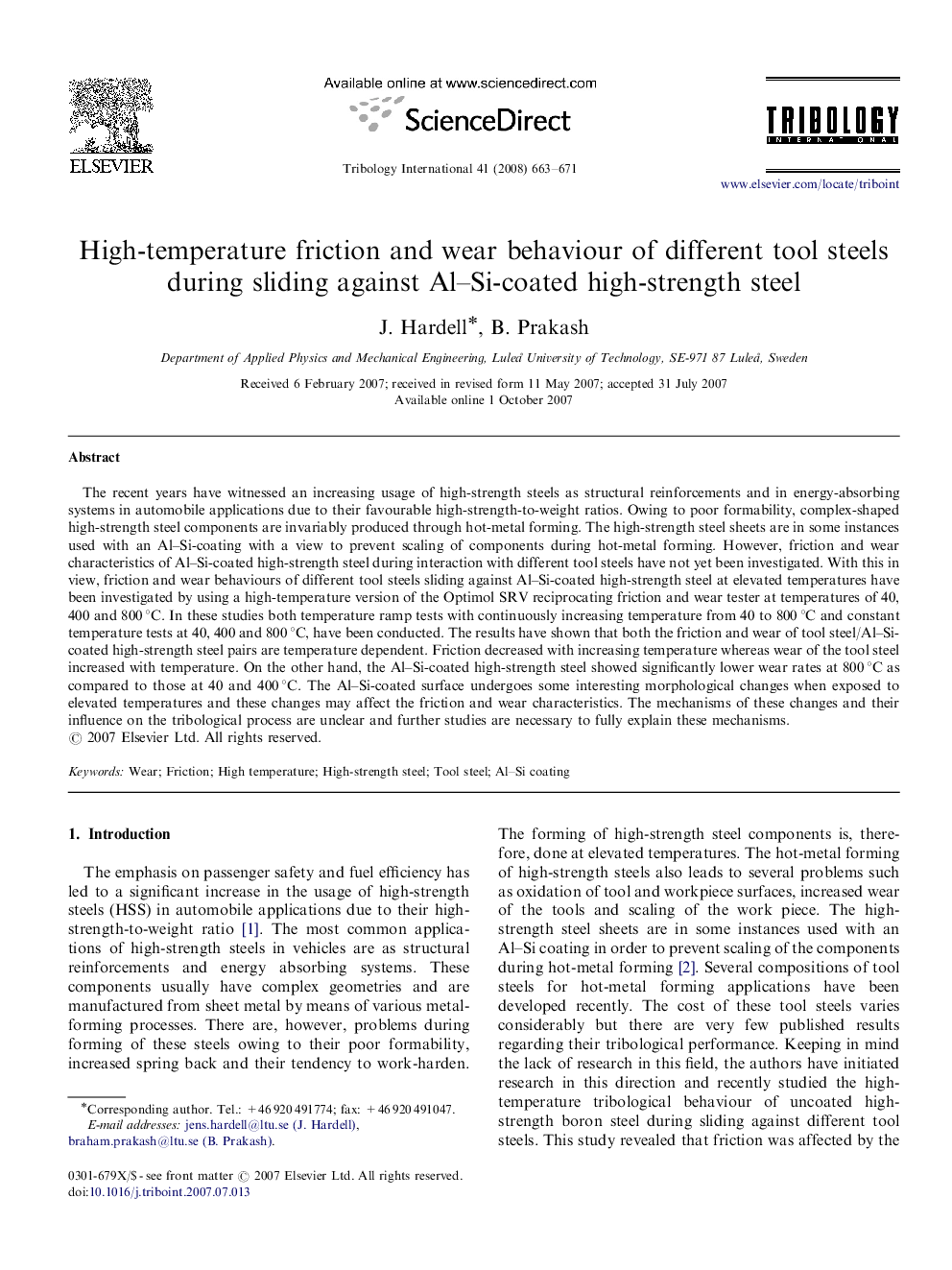| کد مقاله | کد نشریه | سال انتشار | مقاله انگلیسی | نسخه تمام متن |
|---|---|---|---|---|
| 616444 | 881492 | 2008 | 9 صفحه PDF | دانلود رایگان |

The recent years have witnessed an increasing usage of high-strength steels as structural reinforcements and in energy-absorbing systems in automobile applications due to their favourable high-strength-to-weight ratios. Owing to poor formability, complex-shaped high-strength steel components are invariably produced through hot-metal forming. The high-strength steel sheets are in some instances used with an Al–Si-coating with a view to prevent scaling of components during hot-metal forming. However, friction and wear characteristics of Al–Si-coated high-strength steel during interaction with different tool steels have not yet been investigated. With this in view, friction and wear behaviours of different tool steels sliding against Al–Si-coated high-strength steel at elevated temperatures have been investigated by using a high-temperature version of the Optimol SRV reciprocating friction and wear tester at temperatures of 40, 400 and 800 °C. In these studies both temperature ramp tests with continuously increasing temperature from 40 to 800 °C and constant temperature tests at 40, 400 and 800 °C, have been conducted. The results have shown that both the friction and wear of tool steel/Al–Si-coated high-strength steel pairs are temperature dependent. Friction decreased with increasing temperature whereas wear of the tool steel increased with temperature. On the other hand, the Al–Si-coated high-strength steel showed significantly lower wear rates at 800 °C as compared to those at 40 and 400 °C. The Al–Si-coated surface undergoes some interesting morphological changes when exposed to elevated temperatures and these changes may affect the friction and wear characteristics. The mechanisms of these changes and their influence on the tribological process are unclear and further studies are necessary to fully explain these mechanisms.
Journal: Tribology International - Volume 41, Issue 7, July 2008, Pages 663–671